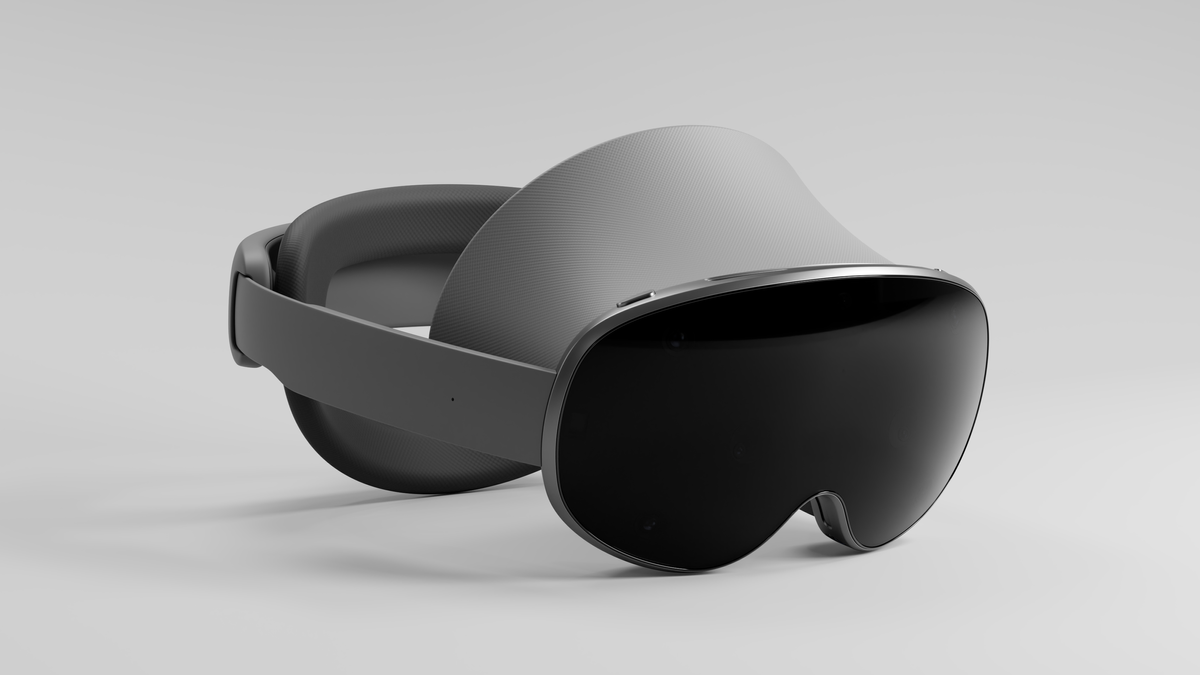MKBHD’s latest video gives the first real look at Samsung’s upcoming headset, and the Android XR operating system it will run.
What Is Samsung’s Headset?
Samsung’s first standalone headset is launching this year, running Google’s new Android XR operating system and powered by Qualcomm’s Snapdragon XR2+ Gen 2 chipset.
Currently known as “Project Moohan”, the headset will feature “state-of-the-art displays”, eye tracking, hand tracking, and an external tethered battery. Beyond this, Samsung isn’t yet sharing detailed specifications.
UploadVR’s Ian Hamilton went hands-on with Samsung’s headset last month, but we weren’t allowed to take photos, videos, or screen recordings, so we could only show a Samsung-provided render of the headset and Google-provided Android XR simulator footage of select apps.
Now, Samsung and Google have given YouTuber Marques Brownlee an exclusive hands-on with the headset, including permission to capture and share footage of both the hardware and software.
Hands-On With Samsung’s Android XR Headset, Shipping In 2025
Samsung’s first standalone headset is coming in 2025, running Google’s new Android XR operating system and powered by Qualcomm’s Snapdragon XR2+ Gen 2 chipset.

When it comes to the hardware, Brownlee repeatedly remarks on the headset’s distinct visual similarity to Apple Vision Pro, saying that when teasing the video before release with an image of him wearing the headset, many of his fans wondered why he was making another Vision Pro video.
He does however note four significant differences in the hardware: the face pad, the strap, the lack of EyeSight, and the open periphery (by default).
Apple Vision Pro has the same kind of ski-mask facial interface as Meta Quest and Pico headsets, where the pressure is distributed throughout your forehead, cheeks, temples, and nose. Samsung headsets have a soft strap similar to Meta Quest Pro or PlayStation VR2. The majority of pressure is applied to the forehead, cheeks and temples. Samsung headsets do not, by default block your view from below and the sides. Samsung, like Quest Pro, offers an attachment that can be used to block out light. Apple Vision Pro comes with two straps that are soft fabric, but they don’t offer much support for the weight of the headset. Samsung uses a rigid, padded plastic strap similar to that of the Elite Strap accessory used with Meta Quest headsets. Apple Vision Pro has a feature not found in other headsets:
. The front OLED screen is curved and has a lenticular lenticular to simulate transparency. Samsung’s headset, on the other hand, does not appear to have any form of front display. Samsung’s headset, on the other hand, doesn’t seem to have any form of front display.
Samsung’s Android XR headset – in reality, not just a render.EyeSightOn the software side, Brownlee had many of the same takeaways as
.
Both found the implementation of the Gemini AI assistant to be far beyond Meta AI on Quest headsets or Siri on Apple Vision Pro.UploadVR’s Ian HamiltonWhile it is possible to ask Meta AI about what you’re seeing,
at least, the assistant only responds with speech. Gemini, on the other side, allows you to circle objects in the real world and it can open Google Maps based on its observations. Gemini can also perform a wide variety of tasks in the operating system and Google apps, whereas Meta AI is still quite limited
Further, Meta AI on Quest headsets simply captures an image upon your query, and currently only sees passthrough, not apps. Siri on Apple Vision Pro is a curious middle ground. It can perform many visionOS tasks, but it doesn’t have visual capabilities, so cannot see what you are seeing. Brownlee’s Android XR preview is reminiscent to Apple’s visionOS when it comes to its app launcher, system menus and app icons. Pressing the top button or opening your palm and pinching brings up a floating grid of circular app icons that can be scrolled horizontally by pinching and dragging.in the US & CanadaAndroid XR – in reality, not a simulator.
Samsung says its headset is still on track to launch later this year, but there’s no word yet on a specific month.
And while Samsung’s headset will be the first to run Android XR, it won’t be the only. Sony, Lynx and Xreal have already adopted
and Play For Dream has also expressed interest in using it.